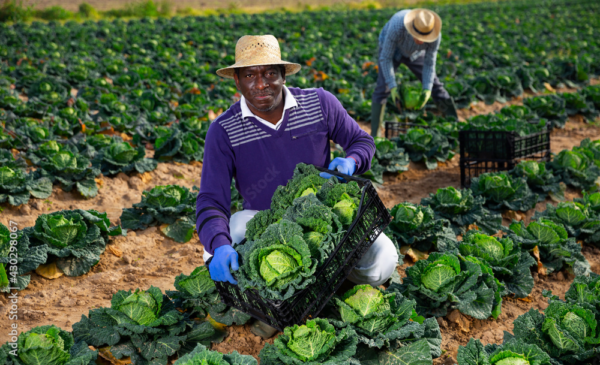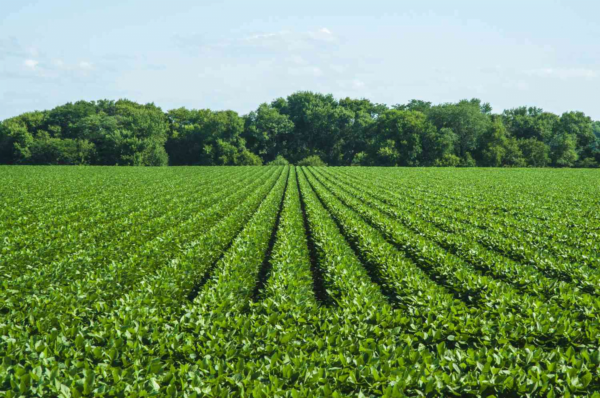The Role of Agritech in Transforming Agriculture in Africa

Introduction
Agriculture is a cornerstone of the African economy, providing employment and livelihoods for a significant portion of the population. However, the sector faces numerous challenges, including low productivity, climate change, limited access to markets and finance, and inadequate infrastructure. Agritech, or agricultural technology, offers promising solutions to these challenges by leveraging innovations in digital technology, biotechnology, and mechanization. This article explores the transformative potential of agritech in Africa, examining its impact on productivity, sustainability, and economic growth, and discusses the barriers to its widespread adoption and strategies to overcome them.
The State of Agriculture in Africa
Agriculture is vital to Africa’s economy, contributing about 23% of the continent’s GDP and employing more than 60% of its population (World Bank, 2020). Despite its importance, the sector remains underdeveloped, with yields significantly lower than global averages. Factors contributing to this include reliance on rain-fed agriculture, poor soil fertility, limited use of modern inputs, and inadequate infrastructure.
Challenges Facing African Agriculture
- Low Productivity: African agricultural productivity is hampered by limited access to quality seeds, fertilizers, and modern farming practices. Yields for staple crops like maize and sorghum are far below their potential (Food and Agriculture Organization, 2021).
- Climate Change: African farmers are highly vulnerable to climate change, which exacerbates droughts, floods, and pest invasions. These climatic variations threaten food security and livelihoods (International Fund for Agricultural Development, 2020).
- Market Access: Many farmers lack access to markets, limiting their ability to sell produce at competitive prices. Poor infrastructure, including roads and storage facilities, exacerbates this issue (World Bank, 2020).
- Financial Services: Access to credit and insurance remains limited, restricting farmers’ ability to invest in productivity-enhancing technologies and inputs (Alliance for a Green Revolution in Africa, 2020).
- Knowledge and Extension Services: There is a significant gap in the provision of agricultural extension services, which are critical for disseminating knowledge about improved farming practices (International Food Policy Research Institute, 2019).
Agritech: An Overview
Agritech encompasses a broad range of technologies and innovations aimed at improving agricultural productivity, efficiency, and sustainability. These include digital technologies like mobile applications and data analytics, biotechnology such as genetically modified crops, and mechanization through advanced farming equipment.
Categories of Agritech
- Digital Technologies: These include mobile apps, drones, satellite imagery, and data analytics that provide farmers with real-time information on weather, soil health, pest outbreaks, and market prices (GSMA, 2021).
- Biotechnology: This involves the use of genetic engineering, molecular markers, and other biotechnological tools to develop high-yielding, disease-resistant, and climate-resilient crop varieties (International Service for the Acquisition of Agri-biotech Applications, 2020).
- Mechanization: The use of modern machinery and equipment such as tractors, planters, and harvesters to increase efficiency and reduce labor costs in farming operations (Food and Agriculture Organization, 2021).
- Irrigation Technologies: Innovations in irrigation, such as drip and sprinkler systems, improve water use efficiency and enable year-round farming (International Water Management Institute, 2020).
- Post-Harvest Technologies: These include improved storage facilities, processing equipment, and logistics solutions to reduce post-harvest losses and improve market access (World Bank, 2020).
Impact of Agritech on African Agriculture
Agritech has the potential to revolutionize African agriculture by addressing key challenges and driving sustainable development.
Enhancing Productivity and Yield
Digital Tools and Data Analytics
Digital tools provide farmers with crucial information that can enhance decision-making and increase productivity. For example, mobile apps like iCow in Kenya offer advice on livestock management, while platforms like FarmCrowdy in Nigeria connect farmers with investors and provide access to quality inputs and training (GSMA, 2021). Data analytics help in predicting weather patterns, monitoring crop health, and optimizing resource use, thereby increasing yields and reducing losses.
Biotechnology
Biotechnology has introduced genetically modified (GM) crops that are resistant to pests and diseases and can withstand adverse climatic conditions. For instance, Bt cotton, which is resistant to the bollworm pest, has been successfully adopted in countries like Burkina Faso and Sudan, leading to significant yield improvements (International Service for the Acquisition of Agri-biotech Applications, 2020).
Promoting Sustainable Farming Practices
Precision Agriculture
Precision agriculture uses GPS, sensors, and IoT devices to optimize the use of inputs such as water, fertilizers, and pesticides. This not only increases efficiency but also reduces environmental impact. Technologies like soil moisture sensors help farmers in semi-arid regions manage water resources more effectively (International Water Management Institute, 2020).
Conservation Agriculture
Agritech promotes conservation agriculture practices such as minimum tillage, crop rotation, and cover cropping, which enhance soil health and biodiversity. These practices are supported by digital platforms that provide farmers with the necessary knowledge and tools (Food and Agriculture Organization, 2021).
Improving Market Access and Supply Chains
E-commerce Platforms
E-commerce platforms and digital marketplaces connect farmers directly with buyers, eliminating intermediaries and ensuring better prices. For example, Twiga Foods in Kenya aggregates demand from vendors and delivers fresh produce directly from farmers, improving market access and reducing post-harvest losses (GSMA, 2021).
Blockchain Technology
Blockchain technology enhances transparency and traceability in supply chains, ensuring that farmers receive fair prices and consumers get quality products. Blockchain-based platforms like AgriLedger in Ghana have been used to track produce from farm to market, building trust and efficiency in the agricultural supply chain (World Bank, 2020).
Facilitating Access to Financial Services
Mobile Banking and Microfinance
Mobile banking services like M-Pesa in Kenya and MTN Mobile Money in Uganda have revolutionized access to financial services for farmers. These platforms enable farmers to save money, access credit, and pay for inputs conveniently. Microfinance institutions also use digital platforms to offer tailored financial products to smallholder farmers (GSMA, 2021).
Agricultural Insurance
Agricultural insurance products, such as weather index insurance, protect farmers against climate-related risks. Companies like Pula Advisors provide insurance services using satellite data to assess weather conditions and crop performance, ensuring timely and accurate compensation for losses (International Fund for Agricultural Development, 2020).
Case Studies
Case Study 1: Digital Green in Ethiopia
Digital Green is an organization that leverages technology to improve agricultural practices and livelihoods. In Ethiopia, Digital Green partners with the Ministry of Agriculture to produce and disseminate video-based training for farmers. These videos cover best practices in crop management, livestock care, and natural resource management (Digital Green, 2021).
Impact
Digital Green’s approach has reached over 1.5 million farmers in Ethiopia, leading to improved adoption of agricultural best practices and increased productivity. The use of video as a medium ensures that information is accessible, engaging, and easily understood, even by farmers with low literacy levels (Digital Green, 2021).
Case Study 2: Agri-wallet in Kenya
Agri-wallet is a mobile-based platform that provides farmers with access to finance through digital wallets. The platform partners with financial institutions to offer credit and savings products tailored to the needs of smallholder farmers. Farmers can use their digital wallets to purchase inputs and pay for services directly from their mobile phones (Agri-wallet, 2021).
Impact
Agri-wallet has improved financial inclusion for thousands of smallholder farmers in Kenya, enabling them to invest in productivity-enhancing technologies and inputs. The platform’s integration with mobile money services ensures that financial transactions are secure and efficient (Agri-wallet, 2021).
Case Study 3: Hello Tractor in Nigeria
Hello Tractor is an agritech company that connects tractor owners with smallholder farmers through a digital platform. Farmers can request tractor services via SMS, and the platform uses GPS to match them with nearby tractor owners. This service improves access to mechanization, which is often limited for smallholder farmers (Hello Tractor, 2021).
Impact
Hello Tractor has increased agricultural productivity by providing affordable and timely access to mechanization. The platform has also created economic opportunities for tractor owners, who can maximize the use of their equipment and generate additional income (Hello Tractor, 2021).
Barriers to Agritech Adoption
Infrastructure Deficits
Inadequate infrastructure, such as poor road networks and unreliable electricity, hampers the widespread adoption of agritech. Farmers in remote areas may have limited access to the internet and mobile networks, affecting their ability to use digital tools (World Bank, 2020).
Digital Literacy
Low levels of digital literacy among farmers can be a barrier to agritech adoption. Training and capacity-building initiatives are essential to ensure that farmers can effectively use digital technologies and tools (Food and Agriculture Organization, 2021).
Financial Constraints
High upfront costs and limited access to credit can prevent farmers from investing in agritech solutions. Innovative financing models, such as pay-as-you-go schemes and microfinance, are needed to make agritech more accessible (Alliance for a Green Revolution in Africa, 2020).
Regulatory and Policy Barriers
Inconsistent and restrictive regulatory frameworks can hinder the deployment of agritech solutions. Governments need to create enabling environments that promote innovation and investment in agritech (International Food Policy Research Institute, 2019).
Strategies to Overcome Barriers
Investment in Infrastructure
Investing in rural infrastructure, such as roads, electricity, and internet connectivity, is crucial for supporting agritech adoption. Public-private partnerships can play a significant role in mobilizing resources for infrastructure development (World Bank, 2020).
Capacity Building and Training
Providing training and capacity-building programs for farmers is essential to improve digital literacy and ensure effective use of agritech solutions. Extension services should be enhanced to support the dissemination of knowledge and best practices (Food and Agriculture Organization, 2021).
Innovative Financing Models
Developing innovative financing models, such as blended finance, impact investing, and pay-as-you-go schemes, can make agritech more affordable for smallholder farmers. Financial institutions should collaborate with agritech companies to offer tailored financial products (Alliance for a Green Revolution in Africa, 2020).
Policy and Regulatory Support
Governments should develop supportive policies and regulatory frameworks that encourage innovation and investment in agritech. This includes simplifying regulatory processes, promoting interoperability of digital platforms, and providing incentives for agritech adoption (International Food Policy Research Institute, 2019).
Conclusion
Agritech has the potential to transform agriculture in Africa by addressing key challenges and driving sustainable development. By enhancing productivity, promoting sustainable farming practices, improving market access, and facilitating access to financial services, agritech can significantly contribute to food security and economic growth. However, to realize its full potential, concerted efforts are needed to overcome barriers to adoption. This includes investing in infrastructure, building digital literacy, developing innovative financing models, and creating supportive policies and regulatory frameworks. With the right strategies in place, agritech can play a pivotal role in shaping the future of agriculture in Africa.
References
Agri-wallet. (2021). About Us. Retrieved from https://www.agri-wallet.com/about-us/
Alliance for a Green Revolution in Africa. (2020). Annual Report 2020. Retrieved from https://agra.org/annual-report/
Digital Green. (2021). About Digital Green. Retrieved from https://www.digitalgreen.org/about/
Food and Agriculture Organization. (2021). The State of Food and Agriculture 2021. Retrieved from https://www.fao.org/state-of-food-agriculture/en/
GSMA. (2021). The Mobile Economy Sub-Saharan Africa 2021. Retrieved from https://www.gsma.com/mobileeconomy/sub-saharan-africa/
Hello Tractor. (2021). About Us. Retrieved from https://www.hellotractor.com/about-us
International Food Policy Research Institute. (2019). Global Food Policy Report 2019. Retrieved from https://www.ifpri.org/publication/2019-global-food-policy-report
International Fund for Agricultural Development. (2020). Rural Development Report 2020. Retrieved from https://www.ifad.org/en/rural-development-report
International Service for the Acquisition of Agri-biotech Applications. (2020). Annual Report 2020. Retrieved from https://www.isaaa.org/resources/publications/annualreport/2020/
International Water Management Institute. (2020). Annual Report 2020. Retrieved from https://www.iwmi.cgiar.org/publications/annual-reports/
World Bank. (2020). Enabling the Business of Agriculture 2020. Retrieved from https://eba.worldbank.org/
World Bank. (2020). The Global Findex Database 2017: Measuring Financial Inclusion and the Fintech Revolution. Retrieved from https://globalfindex.worldbank.org/
Related Readings
- The Growth of Tech Startups in Africa: Opportunities and Challenges
- Cybersecurity in Africa: Protecting Digital Assets in an Increasingly Connected World
- Impact of 5G Technology on Africa’s Digital Economy
- The Role of Artificial Intelligence (AI) in Transforming Africa’s Economy
- The Potential of Blockchain in Transforming Africa’s Economy




